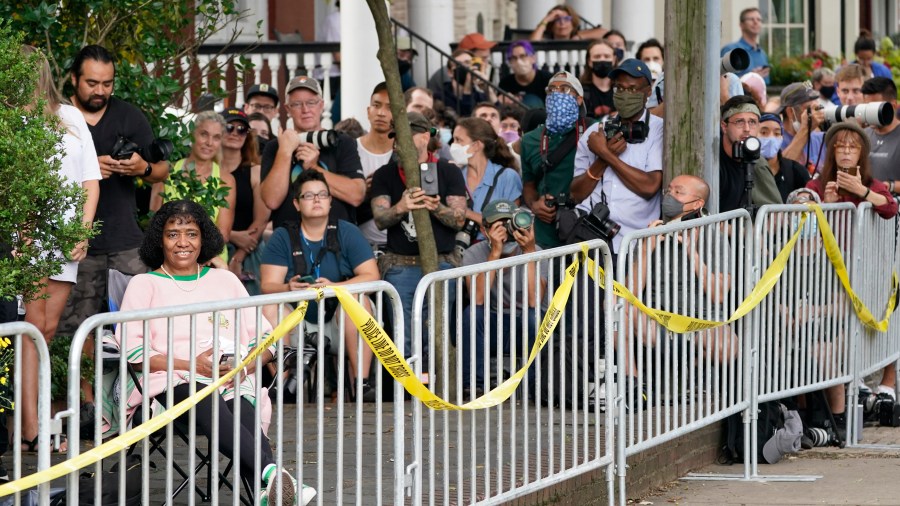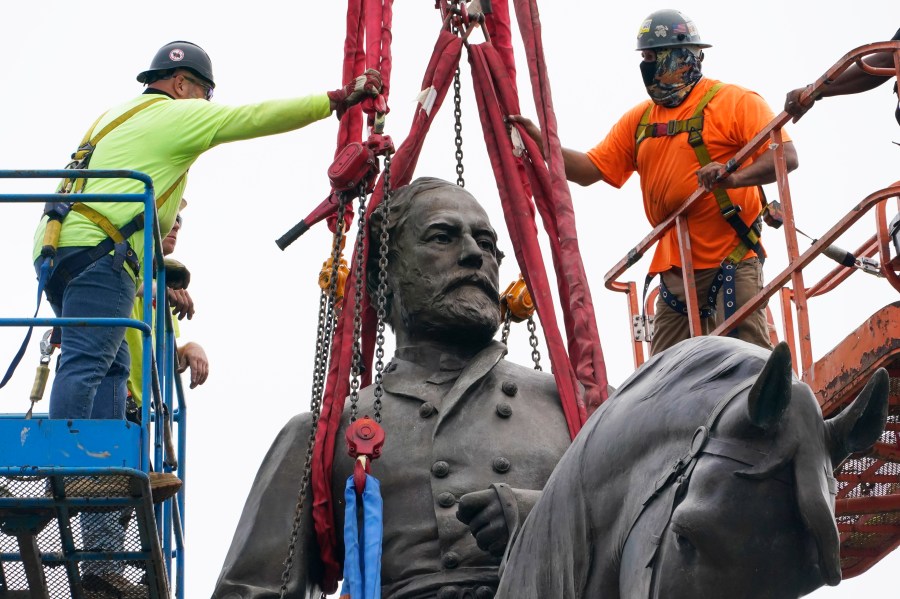RICHMOND, Va. (AP) — After years of resistance and a long court battle, one of America’s largest monuments to the Confederacy was being pulled from its prominent perch in Virginia’s capital city Wednesday.
Virginia Gov. Ralph Northam ordered the Richmond statue of Gen. Robert E. Lee taken down last summer, citing the pain felt across the country over the death of George Floyd in Minneapolis after a white police officer pressed a knee into his neck. But until a recent court ruling cleared the way, Northam’s plans had been tied up in litigation.
The Lee statue, a 21-foot bronze equestrian sculpture that sits atop a pedestal nearly twice that tall, has towered above a prominent residential boulevard named Monument Avenue since 1890 in this former capital of the Confederacy. The one-of-a-kind piece, which was valued for its artistic quality, used to be part of a collection of four other massive Confederate statues on the avenue, but the city removed the others last summer.
Northam noted the enormous size of the Lee monument, which sits in a grassy circle 200 feet in diameter when announcing his initial decision to remove the statue from state land.
“We put things on pedestals when we want people to look up,” he said in June 2020. “Think about the message that this sends to people coming from around the world to visit the capital city of one of the largest states in our country. Or to young children.”
The statue’s removal was expected to be completed Wednesday. Plans called for it to be cut into at least two pieces and hauled to an undisclosed state-owned facility until a decision is made about its final disposition. The pedestal is to remain for the time being, although workers are expected to remove decorative plaques and extricate a time capsule on Thursday.
After Floyd’s death, the area around the statute became a hub for weeks of protests and occasional clashes between police and demonstrators. The pedestal has been covered by constantly evolving, colorful graffiti, with many of the hand-painted messages denouncing police and demanding an end to systemic racism and inequality.
The decisions by the governor and Richmond Mayor Levar Stoney to remove the Confederate tributes marked a major victory for civil rights activists, whose previous calls over the decades to remove the statues had been steadfastly rebuked by city and state officials alike.
A previous wave of resistance to the statues came in 2017 when a rally of white supremacists in the city of Charlottesville erupted into violence. Other Confederate monuments started falling around the country.
But in Virginia, local governments were hamstrung by a state law that protected memorials to war veterans. That law was amended in 2020 by the new Democratic majority at the statehouse and signed by Northam. With the changes that took effect on July 1, 2020, localities could decide the monuments’ fate.
The process was supposed to take weeks, but Stoney decided to move faster, citing the continuing demonstrations and concerns that protesters could get hurt if they tried to bring down the enormous statues themselves.
Work crews removed statues of Gen. Thomas “Stonewall” Jackson, Confederate naval officer Matthew Maury and Gen. J.E.B. Stuart from the thoroughfare. Before Stoney’s decree, protesters toppled a statue of Confederate President Jefferson Davis. Although the figures themselves are gone, their pedestals remain.
The changes have remade Monument Avenue, a prestigious residential street lined with mansions and tony apartments, part of which has been designated a National Historic Landmark district. Richmond officials are advancing plans to remove the pedestals and other remnants of the statuary and at least temporarily pave over or re-landscape the sites. Northam has tapped the Virginia Museum of Fine Arts to lead a community-driven redesign process for the whole of Monument Avenue, but that process is expected to be a long one and has not made substantial progress.
A statue of Black tennis hero and Richmond native Arthur Ashe that was erected on the avenue in 1996 is expected to remain.
As for the Lee statue, Northam has said his administration will seek public input on what should happen to it next.
Several lawsuits were filed challenging the removal of the Lee statue and injunctions prevented its removal while the cases were pending. The Supreme Court of Virginia ruled unanimously last week against the plaintiffs.








